Understanding Contracts for Difference (CFDs): Navigating a Dynamic Market
Are you curious about how to potentially profit from financial market movements without actually owning the underlying assets? The world of Contracts for Difference (CFDs) offers a fascinating, yet complex, avenue for traders. In today’s rapidly evolving financial landscape, influenced by global economic pressures, advanced technology like Artificial Intelligence (AI), and a new generation of traders, understanding CFDs is more critical than ever. This article will explore the core mechanics of CFD trading, delve into the major market trends shaping its future, discuss the transformative role of AI, and highlight the essential pillars of education, regulation, and trust required for success in this dynamic environment.
CFD Mechanics: Understanding Leverage, Short Selling, and Inherent Risks
At its heart, a Contract for Difference (CFD) is a derivative financial instrument that allows you to speculate on the price movements of various assets without actually owning them. Imagine you believe the price of gold will rise; with a CFD, you don’t buy physical gold. Instead, you enter into an agreement with a broker to exchange the difference in the asset’s price from when you open the trade to when you close it. If your prediction is correct, you profit from that difference; if not, you incur a loss. This dynamic is often visualized on trading charts, where price movements are tracked over time. 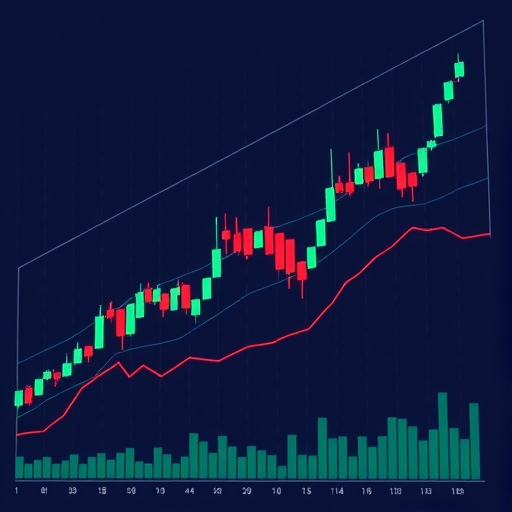 This flexibility means you can potentially profit from both rising markets (going “long”) and falling markets (going “short”). Unlike some other financial instruments, CFDs generally do not have a fixed expiry date, offering continuous trading opportunities across diverse markets like stocks, indices, commodities, currencies, and cryptocurrencies.
This flexibility means you can potentially profit from both rising markets (going “long”) and falling markets (going “short”). Unlike some other financial instruments, CFDs generally do not have a fixed expiry date, offering continuous trading opportunities across diverse markets like stocks, indices, commodities, currencies, and cryptocurrencies.
One of the most defining features of CFD trading is leverage. Leverage allows you to control a large position in the market with a relatively small amount of capital, known as “margin.” For example, if a broker offers 1:30 leverage, a $100 margin deposit could control a $3,000 position. While leverage can significantly amplify your potential profits, it also dramatically magnifies potential losses, sometimes even exceeding your initial investment. This makes prudent use of leverage and robust risk management strategies absolutely essential. Another key advantage of CFDs is the simplified process for short selling, which enables you to profit when an asset’s price declines. This is often more complex and restricted in traditional markets.
However, it’s crucial to understand the differences between CFD trading and traditional asset ownership, and to be aware of the inherent risks. When you trade CFDs, you do not own the underlying asset, meaning you don’t receive shareholder rights like voting privileges or dividends. Your profit or loss is simply the difference between the opening and closing prices, minus any associated costs. These costs typically include spreads (the difference between the buy and sell price), overnight fees (for positions held open past a certain time, also known as swaps), and sometimes commissions. Understanding these costs is vital for profitability. Key costs include:
- Spreads: The difference between the bid (sell) and ask (buy) price of an asset, which is essentially the broker’s profit margin on the trade.
- Overnight Fees (Swaps): Charges or credits applied to your account for holding a CFD position open overnight, reflecting interest rate differentials between the two currencies in a pair, or funding costs for other assets.
- Commissions: A direct fee charged by some brokers for opening or closing a trade, often a percentage of the trade value or a flat fee per lot.
The absence of standardized legal specifications for CFDs means that brokers often act as market makers, setting their own rules, which underlines the importance of choosing a regulated and reputable broker.
Consider the following comparison to highlight these differences:
| Feature | CFD Trading | Traditional Trading (e.g., Stocks) |
|---|---|---|
| Asset Ownership | No actual ownership; speculate on price movements. | Direct ownership of the asset (e.g., shares), with voting rights. |
| Leverage Use | Significant leverage used, amplifying gains and losses. | Typically less or no leverage for standard purchases. |
| Short Selling | Simplified process to profit from price declines. | More complex, often involves borrowing shares. |
| Dividends/Rights | No dividends or direct shareholder rights. | Entitlement to dividends and shareholder protections. |
| Costs | Spreads, overnight fees, commissions. | Brokerage commissions, sometimes stamp duty. |
| Regulation | Varies by jurisdiction; dependence on broker. | Generally highly regulated by exchange rules. |
| Geographic Access | Illegal in some countries (e.g., US, Brazil). | Widely available globally, subject to local laws. |
Given these dynamics, what are the primary risks you should be aware of? Leverage magnification is perhaps the most significant, as it can lead to losses that exceed your initial deposit. Market volatility, especially during significant economic news or geopolitical events, poses a high risk, particularly for beginners. The various costs associated with CFDs can also erode your profits. Furthermore, due to the non-standardized nature of CFDs and varying industry regulations, your protection can largely depend on your chosen broker’s reputation and financial stability. If a broker faces liquidation, your position could be at risk since you don’t own the underlying asset. Therefore, choosing a regulated broker with protections like negative balance protection is a vital risk management strategy.
Diversified asset classes are readily available for CFD trading, allowing traders to speculate on various market sectors. Here’s a brief overview:
| Asset Class | Description | Typical Leverage Examples (varies by regulator) |
|---|---|---|
| Stocks (Equities) | Speculate on the price movements of individual company shares (e.g., Apple, Tesla) without owning the actual stock. | 1:5 (retail clients in regulated markets) |
| Indices | Trade on the performance of a basket of stocks representing a specific market or sector (e.g., S&P 500, FTSE 100, DAX 40). | 1:20 (retail clients in regulated markets) |
| Commodities | Profit from price changes in raw materials like gold, silver, oil, or natural gas. | 1:20 (retail clients in regulated markets) |
| Forex (Currencies) | Trade on the exchange rate fluctuations between two currencies (e.g., EUR/USD, GBP/JPY). This is the most liquid market. | 1:30 (retail clients in regulated markets) |
| Cryptocurrencies | Speculate on the volatile price movements of digital assets such as Bitcoin, Ethereum, or Ripple without directly owning them. | 1:2 (retail clients in regulated markets) |
The Evolving Global CFD Landscape: Macro Pressures and Market Shifts
The global CFD market is currently undergoing a significant transformation, driven by powerful macroeconomic forces and shifting regional dynamics. We observe that global macroeconomic pressures, such as persistent inflationary cycles, currency instability, and escalating geopolitical tensions, are intensifying market volatility across the board. These pressures often create dynamic market conditions, clearly visible on trading charts as price fluctuations. 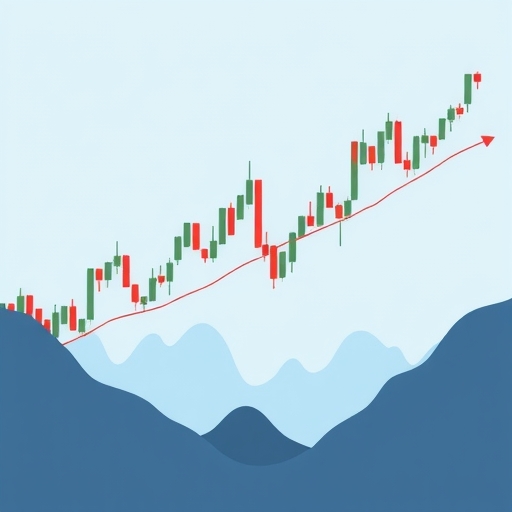 This heightened volatility often drives interest in flexible financial instruments like CFDs, which can be used to speculate on rapid price swings or even as a hedging tool to offset potential losses in other investments. Central bank interest rate changes and major economic policies directly influence market dynamics and how traders approach their strategies.
This heightened volatility often drives interest in flexible financial instruments like CFDs, which can be used to speculate on rapid price swings or even as a hedging tool to offset potential losses in other investments. Central bank interest rate changes and major economic policies directly influence market dynamics and how traders approach their strategies.
Consider the impact of specific regional factors, such as those in South Africa, which play an equally significant role. We’ve seen how local fiscal reforms like VAT adjustments, ongoing concerns about electricity infrastructure, weakening business confidence, and inflationary pressures contribute to significant Rand fluctuations. Such domestic market instability often encourages the use of CFDs, whether for speculative purposes or as a means of hedging against currency depreciation or local stock market downturns. The CFD market in Africa, particularly South Africa, presents enormous growth potential as technology becomes more accessible and platforms enhance educational support, empowering a new generation of retail traders.
The absence of standardized legal specifications for CFDs means that brokers frequently act as market makers, setting their own rules. This can potentially disadvantage traders in disputes and further emphasizes why selecting a trusted, regulated broker is paramount. When choosing a broker, look for these regulatory indicators:
- Regulation by multiple tier-one authorities (e.g., FCA, ASIC, CySEC) provides enhanced security and oversight.
- Segregated client funds, meaning your money is kept separate from the broker’s operational funds, offering protection in case of insolvency.
- Negative balance protection, which ensures you cannot lose more than your deposited capital, preventing deeper debt.
Unlike traditional stock ownership, CFD trading does not grant shareholder rights, meaning traders are exposed to broker-specific risks such as liquidation. This highlights the critical importance of a broker’s credibility and regulatory compliance. It’s also worth noting that CFD trading remains illegal in certain major economies like the United States and Brazil, primarily because it’s often classified as an over-the-counter (OTC) product, which falls outside their traditional exchange-based regulatory frameworks.
Artificial Intelligence’s Transformative Role and the Hybrid Trading Imperative
One of the most exciting and impactful developments reshaping the CFD landscape is the accelerating pace of technological acceleration, particularly in Artificial Intelligence (AI). AI, automation, and real-time analytics are rapidly democratizing access to sophisticated, institutional-grade trading tools that were once exclusive to large financial institutions. For retail traders, especially those in emerging markets, AI offers unprecedented capabilities such as predictive analytics, sentiment analysis, and advanced algorithmic trading tools. This means you can now leverage powerful data processing to identify patterns, gauge market mood from news and social media, and even automate parts of your trading strategy, significantly reducing the learning curve for tech-assisted trading beyond basic automation.
However, while AI offers immense potential, we advocate for a “hybrid approach” to trading. This strategy wisely combines the insights and analytical power of AI with crucial human judgment and robust risk management. Why is this hybrid approach so important? In volatile markets, AI models, despite their sophistication, can sometimes misinterpret nuanced shifts or react to herd-like behavior, leading to unforeseen outcomes. Human intuition, emotional control, and the ability to adapt to truly unprecedented events remain irreplaceable. Therefore, comprehensive education on AI’s broader capabilities and its responsible integration into a trading plan is crucial for wider adoption, particularly in regions like Africa where financial literacy around advanced tech tools is still developing.
The rise of AI also brings new opportunities for market analysis and strategy development. Tools powered by AI can process vast amounts of data, helping you identify trends, support levels, and resistance points more efficiently. This can enhance your technical analysis, allowing you to make more informed decisions. Such analytical capabilities are particularly useful for interpreting complex trading charts and predicting potential future movements. 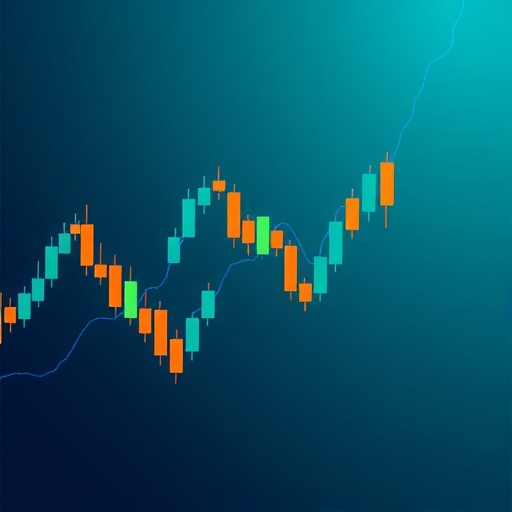 Furthermore, AI can aid in backtesting trading strategies against historical data, providing insights into their potential performance before you risk real capital. This blend of cutting-edge technology and human oversight is key to navigating the complexities of modern financial markets effectively.
Furthermore, AI can aid in backtesting trading strategies against historical data, providing insights into their potential performance before you risk real capital. This blend of cutting-edge technology and human oversight is key to navigating the complexities of modern financial markets effectively.
A New Generation of Traders: Characteristics, Challenges, and the Call for Discipline
The demographics of CFD traders are noticeably shifting, introducing a new wave of participants to the market. We observe that this new generation of traders is typically younger, inherently tech-savvy, and often more risk-tolerant, actively seeking alternative income streams in an increasingly digital world. Their comfort with digital interfaces and data visualization, often including detailed trading charts, makes them quick adopters of online trading platforms. 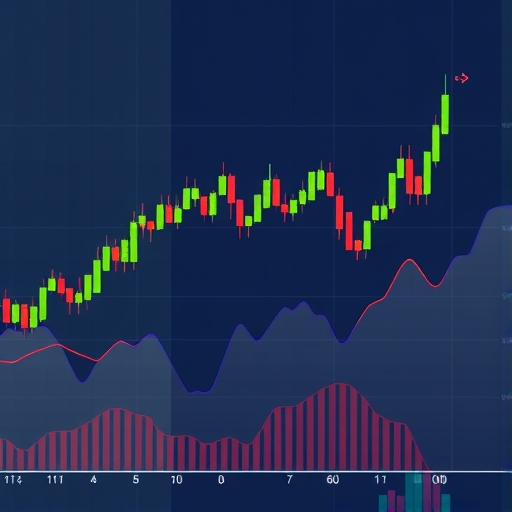 However, this demographic shift also presents unique challenges. Many of these traders rely heavily on social media platforms and influencers for information and trading signals, which can sometimes lead to impulsive, short-term, and hype-driven behaviors rather than well-researched decisions.
However, this demographic shift also presents unique challenges. Many of these traders rely heavily on social media platforms and influencers for information and trading signals, which can sometimes lead to impulsive, short-term, and hype-driven behaviors rather than well-researched decisions.
This reliance on unverified information and the “get-rich-quick” narratives propagated online can lead to significant financial risks. The gamification of some trading apps, while designed to make trading more accessible, can inadvertently blur the line between serious financial endeavor and entertainment, potentially encouraging overtrading or excessive risk-taking. For this new generation, it is critically important to reframe CFD trading not as a shortcut to wealth, but as a disciplined activity requiring consistent learning, astute risk management, and strong emotional control. To foster discipline and long-term success, traders should focus on:
- Developing a robust trading plan that outlines specific goals, strategies, and risk parameters before entering any trade.
- Practicing emotional resilience by adhering to the trading plan, avoiding impulsive decisions driven by fear or greed.
- Continuously educating themselves on market dynamics, economic indicators, and advanced trading techniques beyond initial concepts.
Cultivating a long-term mindset and focusing on capital preservation over immediate, high returns is paramount for building true financial resilience.
What does this mean for you as a trader or aspiring trader? It means prioritizing legitimate, comprehensive education over unverified advice. It means understanding that successful trading is a marathon, not a sprint, built on a foundation of knowledge and strategic planning. Developing a comprehensive trading plan, which includes defining your market selection, entry and exit points, and clear risk tolerance levels, is crucial. This helps you avoid reacting emotionally to market fluctuations and stick to a predefined strategy, regardless of external noise. Ultimately, empowering this new generation means equipping them with the tools not just for trading, but for lifelong financial literacy and responsible decision-making.
Building a Sustainable Ecosystem: Education, Regulatory Clarity, and Trust
For the CFD market to mature and thrive sustainably, particularly in rapidly growing regions, three fundamental pillars must be strengthened: education, regulatory clarity, and trust. These elements are indispensable for fostering an environment where traders are truly empowered to succeed, rather than being exposed to unnecessary risks or scams.
Firstly, comprehensive and practical education is paramount. Traders need more than just basic definitions; they require scenario-based learning that helps them understand how various tools, including AI-driven insights, CFDs themselves, and even emerging assets like crypto CFDs, operate in real-world market conditions. This education should emphasize the practical application of risk management strategies, such as utilizing stop-loss and take-profit orders, careful position sizing (e.g., risking only 1-2% of capital per trade), and prudent use of leverage, starting with lower ratios. Brokers like Octa and LiteFinance contribute to this by offering educational webinars, articles, and analytical tools. Empowering traders with knowledge helps them make informed decisions and build financial resilience.
Effective risk management is critical for long-term success in CFD trading. Here are some essential strategies:
| Strategy | Description | Benefit |
|---|---|---|
| Stop-Loss Orders | An instruction to automatically close a trade when the price reaches a specified level, limiting potential losses. | Protects capital by preventing further losses if the market moves against your position. |
| Take-Profit Orders | An instruction to automatically close a trade when the price reaches a specified profit level. | Secures gains and removes the emotional element of deciding when to exit a profitable trade. |
| Position Sizing | Determining the appropriate amount of capital to risk on any single trade, often a small percentage of your total trading capital (e.g., 1-2%). | Minimizes the impact of any single losing trade on your overall portfolio. |
| Diversification | Spreading your investments across different asset classes, markets, or strategies rather than concentrating them in one area. | Reduces overall portfolio risk by not putting all your capital into a single volatile asset. |
Secondly, regulatory clarity is crucial. Regulatory authorities must establish clear, accessible guidelines that protect traders without stifling innovation. This is especially vital in nascent areas like crypto CFDs, where regulations are still evolving. Clear governmental communication and collaboration between regulators and brokers can foster a more secure trading environment. For instance, reputable brokers like Trade Nation are regulated by multiple authorities, including the UK Financial Conduct Authority (FCA), Australian Securities and Investment Commission (ASIC), and South Africa’s Financial Sector Conduct Authority (FSCA), providing multiple layers of oversight and accountability. This multi-jurisdictional regulation is a strong indicator of a broker’s commitment to compliance and trader protection.
Finally, building and maintaining trust is foundational. In markets where public confidence might be eroded by past financial scams or unreliable platforms, brokers and platforms must build trust through consistent delivery, transparent pricing, and credible support. This means clear communication about spreads, overnight fees, and commissions, as well as providing reliable customer service and robust trading platforms like MetaTrader 4 (MT4) and MetaTrader 5 (MT5). The availability of demo accounts for practice before live trading is also a critical trust-building feature, allowing you to familiarize yourself with the platform and market dynamics without financial risk. Proprietary trading firms offering “instant funded accounts” represent a new model that streamlines access to capital, but still requires robust risk management and skill assessment from the trader’s end, highlighting the continued importance of trustworthiness in all aspects of the trading ecosystem.
Conclusion
The future of CFD trading is undeniably shaped by a complex interplay of rapid technological innovation, evolving global economic landscapes, and a new generation of digital-native traders. We’ve seen how leverage, while powerful, demands rigorous risk management, and how Artificial Intelligence offers unprecedented analytical capabilities that are best utilized in a hybrid approach, blending human judgment with algorithmic insights. The shift in trader demographics underscores the urgent need for comprehensive education focused on discipline, emotional control, and long-term financial resilience, moving away from hype-driven speculation.
Ultimately, a sustainable and empowering CFD ecosystem hinges on clear regulatory frameworks and unwavering trust between traders and brokers. By prioritizing transparent practices, accessible educational resources, and robust oversight, the CFD market can continue to evolve, offering valuable opportunities for those who approach it with knowledge, discipline, and a commitment to continuous learning. Remember, understanding the mechanics, appreciating the risks, and leveraging technology responsibly are your keys to navigating this exciting financial frontier.
Disclaimer: This article is for informational and educational purposes only and does not constitute financial advice. Trading Contracts for Difference (CFDs) carries a high level of risk and may not be suitable for all investors. You could lose some or all of your invested capital. It is essential to understand the risks involved and to seek independent financial advice if you have any doubts.
Frequently Asked Questions (FAQ)
Q: What is a Contract for Difference (CFD) and how does it differ from traditional stock ownership?
A: A CFD is a derivative financial instrument that allows you to speculate on the price movements of an underlying asset (like stocks, commodities, or currencies) without actually owning the asset itself. Unlike traditional stock ownership, you do not receive dividends, voting rights, or physical possession of the asset. Your profit or loss is simply the difference between the opening and closing prices of your trade, making it a flexible tool for both rising and falling markets, often with the use of leverage.
Q: How does Artificial Intelligence (AI) impact CFD trading, and what is the “hybrid approach”?
A: AI is transforming CFD trading by providing retail traders with sophisticated tools like predictive analytics, sentiment analysis, and algorithmic trading, previously exclusive to institutions. This helps identify patterns and automate strategies. The “hybrid approach” advocates combining AI’s analytical power with human judgment and risk management. This is crucial because while AI offers immense potential, human intuition and adaptability remain essential for navigating highly volatile or unprecedented market conditions that AI models might misinterpret.
Q: What are the most important factors for new generation traders to succeed in the CFD market?
A: For the new generation of tech-savvy traders, success in CFDs hinges on discipline, risk management, and continuous education. It’s vital to move beyond hype-driven behaviors often seen on social media. Key factors include developing a robust trading plan, practicing emotional control to avoid impulsive decisions, and prioritizing legitimate educational resources. Understanding and implementing risk management strategies like stop-loss orders and proper position sizing are paramount for capital preservation and long-term financial resilience.


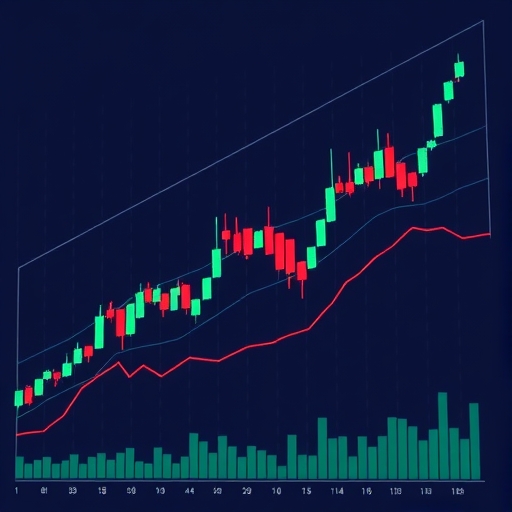
No responses yet